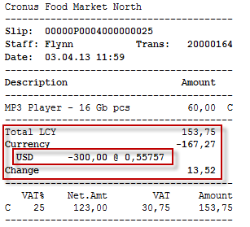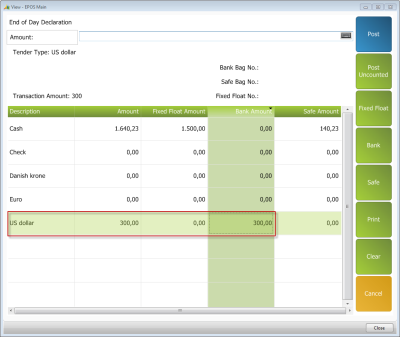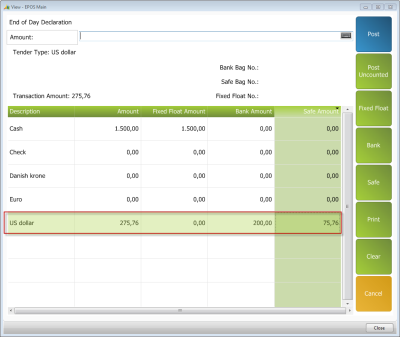The following applies to a store with currency that is not a float currency. If payment is made in currency other than the default one and money is put in a bag afterward, the following steps apply:
- An item is sold on the POS.
- Payment is made in foreign currency, either the exact amount or the payment exceeds the price of the item.
- If the payment exceeds the item's price, the return is made in the local currency (float).
Example: The amount is shown on the slip in the local currency (LCY) and in the foreign currency. In this example, the payment is US 300 dollars. The amount is shown in US dollars with the exchange rate used (here 300 @ 0,55757) and in the local currency as well. The change is given in the local currency.

-
After a sale in foreign currency a tender declaration is made and posted, and the currency is put in a bank, a safe bag or both. This is visible while the tender declaration is made.

… or

- You can have a Z-report printed (by request).
In the safe, on the Store Safe card, you can see that after a sale and tender declaration with currency, the Balance (which is the total balance) and the Balance LCY (in local currency) is not the same amount.
When you look up the balance by clicking the Links action on the Store Safe card, you can see in detail the amount for the day's sales in foreign currency.
Note: Just as other bag types, bags with foreign currency can be joined, split, and broken.